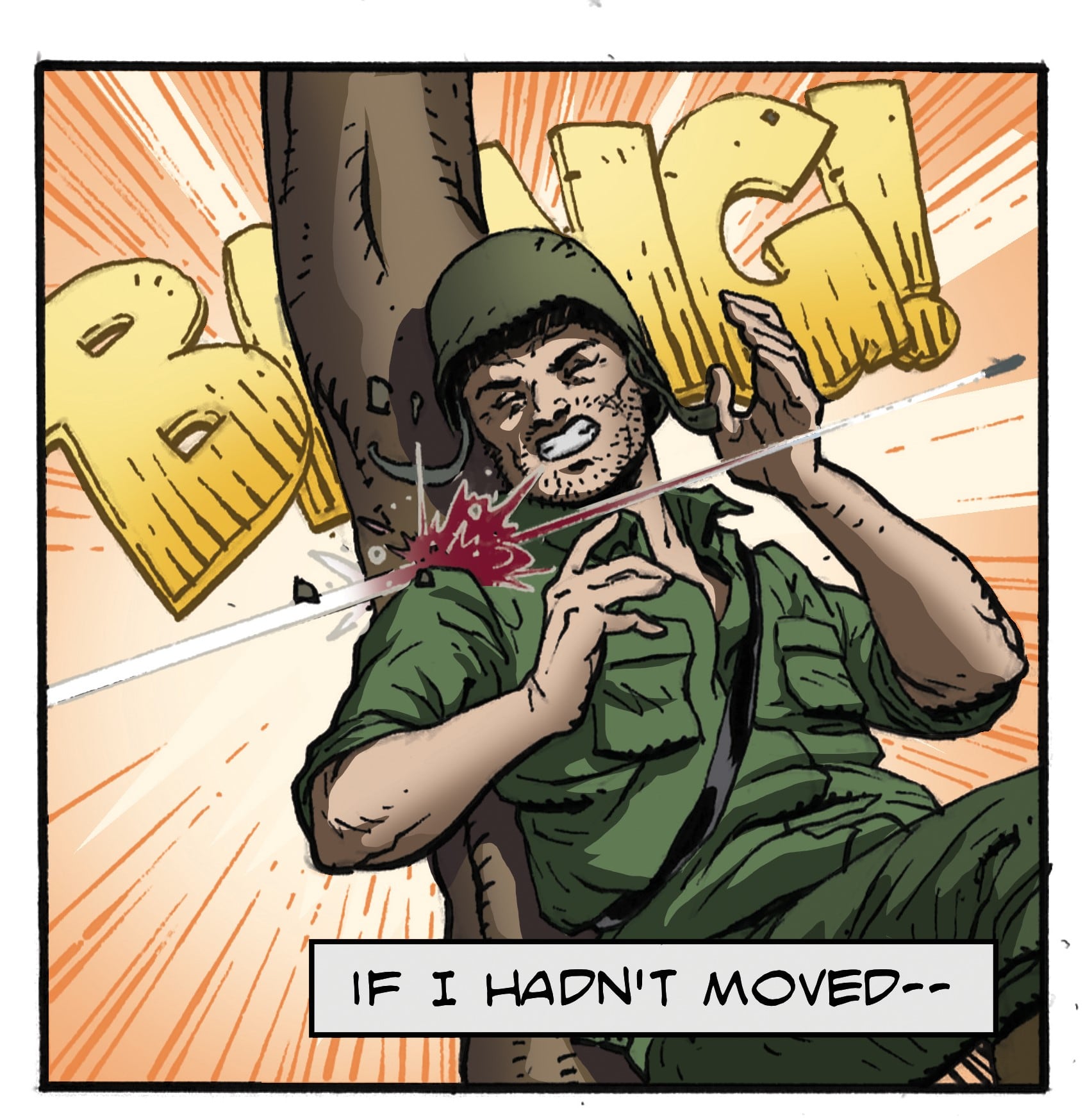When retired U.S. Marine Corps Master Sgt. Dayton Meadows displays the American flag at his Mercer County, West Virginia, property, people notice.
The 20-foot by 38-foot U.S. garrison flag is secured to an 82-foot-tall flagpole just outside the Interstate 77-West Virginia Turnpike right of way at Milepost 25, midway between the Ghent and Athens interchanges. Clearly visible to both northbound and southbound travelers, the giant flag is on display day and night, illuminated by a spotlight during the hours of darkness.
“More than 600,000 vehicles travel this section of interstate every month,” said Meadows. “I figure each one is carrying at least two people, on average, meaning that more than a million people see the flag each month.”
The flag was first raised on Aug. 27, 2016, through the efforts of The Freedom Flag Project, created by Meadows and supported by fellow veterans, neighbors and friends. Meadows also organized the nonprofit Mountain Memories Veterans Retreat, a secluded, 200-acre tract of land with a lodge available to service members who have returned from stressful missions abroad, located a few miles east of the giant flag.
RELATED

Meadows said the motivation for his giant flag display and veterans’ support work is based on his belief that “America is involved in the biggest battle in its history.”
“We’re losing our sense of patriotism and we’re ignoring our veterans,” he said. “Instead of working together, everyone’s playing the blame game. I feel obligated to tell people what’s good about America and how much our veterans have done for our country. America’s got its problems, but it’s still the best country in the world.”
Meadows grew up in southern West Virginia, attended Woodrow Wilson High School in Beckley, West Virginia, and enlisted in the Marine Corps in 1963, on his 18th birthday.
“I liked the Marines’ commercial about building men in mind, body and spirit, and wanted to be a part of it,” he recalled.
To say he doesn’t regret the move is an understatement.
One of his early duty assignments was as an electronics technician for HMX-1, the presidential helicopter squadron that operates Marine Corps One. In 1969–1970, Meadows served as a helicopter door gunner in Vietnam.
“I was terrified when I first got to Vietnam, but I’ll never forget the feeling of camaraderie I had by the time I left,” he said.
He later was an aircraft systems analyst with a Marine A-6 unit, then spent the last nine years of his Marine career as a recruiter at a variety of West Virginia locations, including two years in Charleston.
Near the base of the giant flag, on a 42-acre tract of land fronting U.S. 19, which parallels I-77, Meadows makes use of an A-frame cottage, a shop and a cluster of storage buildings, and lives in a cabin in a wooded section of the property away from the freeway.
Meadows said he is now raising funds, collecting donated and discounted supplies, and organizing donated labor for a new addition to the flagpole area — a 1,900 square-foot pavilion, half enclosed and half open-air. He said he envisions it being used for community events, awards ceremonies, and “any activities that promote core American values.”
He hopes to have the new pavilion open by October.
Meadows also plans to convert the A-frame into an Airbnb rental unit, and to replace the existing eye-catching flag with an even larger one — a 30-foot by 60-foot banner displayed from a 135-foot tall flagpole.
“Bigger is better,” he said.
Meadows said he draws a large measure of inspiration for his work from World War II Medal of Honor recipient and fellow Marine and West Virginian Hershel “Woody” Williams.
“When I first started on the flag project, Woody asked me how long I thought it would take me to get it raised,” Meadows recalled. “I told him three to six months. It ended up taking two years.”
Five years ago, Williams was the main speaker at the flag raising ceremony for the giant banner.
“I got the last screw put in the flagpole’s base a few minutes before Woody got here,” Meadows said.




